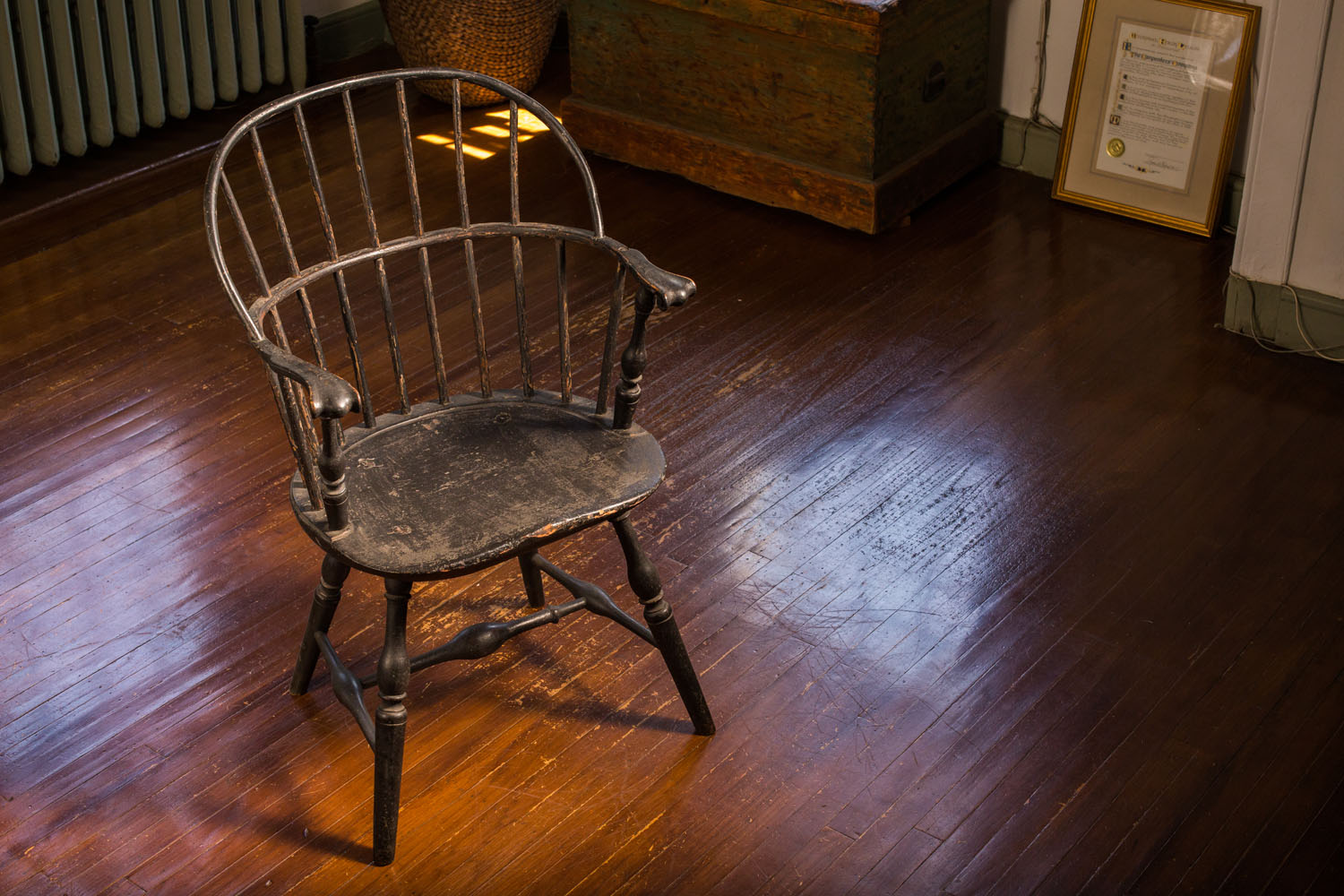What You'll See in Carpenters' Hall
- Gilded Frame Membership Boards
The two gilded frames display the names of the members to-date of The Carpenters' Company. In the left-hand column of names are the Master Builders who constructed most of colonial Philadelphia. Since 1724, it has been an active company, and consists today of over 150 architects, engineers, and builders from the region who contribute generously to maintain the first privately-owned building to be opened as an historic monument. - Fan Window
This south fan window was not installed until the early 1790s, twenty years after construction began and shortly before the First Bank of the United States under Alexander Hamilton moved in, staying for roughly six years. - Banners
East wall: carried by Gunning Bedford, whose portrait is featured on the south wall, at the head of the Company in the parade marking the ratification of the Constitution.
West wall: carried by members in the parade marking the Centennial of the birth of George Washington, a Virginia delegate to the First Congress. - Model of Carpenters' Hall
Constructed over two years by a model shop at the Hagley Museum near Wilmington, DE, to illustrate 18th century construction methods. Scaffolding is lashed together; a horse and derrick raise heavy sections. The roof trusses are reinforced to achieve clear span. Two bridge-like trusses strengthen the second floor. Timbers are largely fastened with mortise and tenon joints, then pegged together. The rear doorway lacks the fan window, which was installed 20 years later. Bricks are laid in "Flemish bond," a style with decorative, blackened ends (called "glazed headers") laid at right angles to the wall in order to help tie together interior courses of bricks. - Officers' Furniture
Dates from c. 1890. Company still holds quarterly meetings in this room, for which the furniture is still used. The tile floor dates from the same period and was made by Minton, a British company which also supplied tile floor for the U.S. Capitol Building. The original pine floor was cut up and used to help support the tile floor. - Painting of Washington (over the entrance)
Painted by Boston artist Jane Stuart (1812-1888), one of several copies produced throughout her lifetime. The original of this portrait, done by her father, Gilbert Stuart, hangs in the Library of Congress in Washington, D. C. - Painting of Matthew McGlathery
This portrait was painted by Raphael Peale, a son of Charles Willson Peale, who designed the Grand Federal Edifice. Raphael, who married McGlathery's daughter Martha (Patty), presented this portrait to his father-in-law. The Company held the mortgage on Raphael's house, near the northeast corner of 6th & Delancey Streets. - The Display of First Continental Congress Chairs
On display is the original Speaker’s chair used by President of the First Continental Congress, Peyton Randolph - there is also an exact replica which guests are invited to sit in. Additionally, there is a Sack Back Windsor used by the Congressional delegates. Displayed across the arms of this Windsor is a branding iron made by craftsman William Dawson, commissioned by The Carpenters' Company in 1790. Before the British captured Philadelphia in 1777, members probably removed these chairs to their homes for safekeeping, otherwise they would likely have been burned for firewood. After the British left, the chairs were each branded "Carpenters' Co" under the seat.









